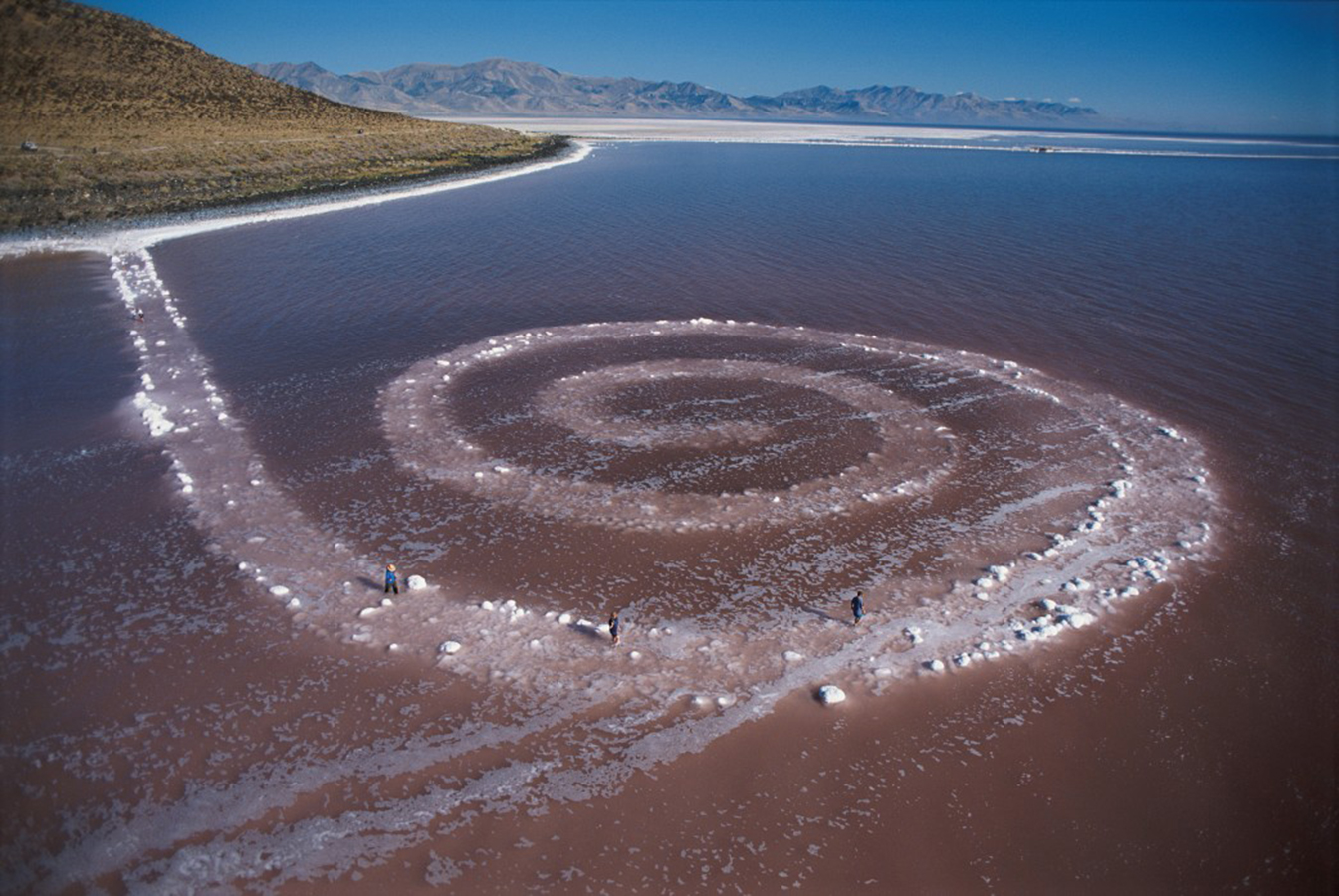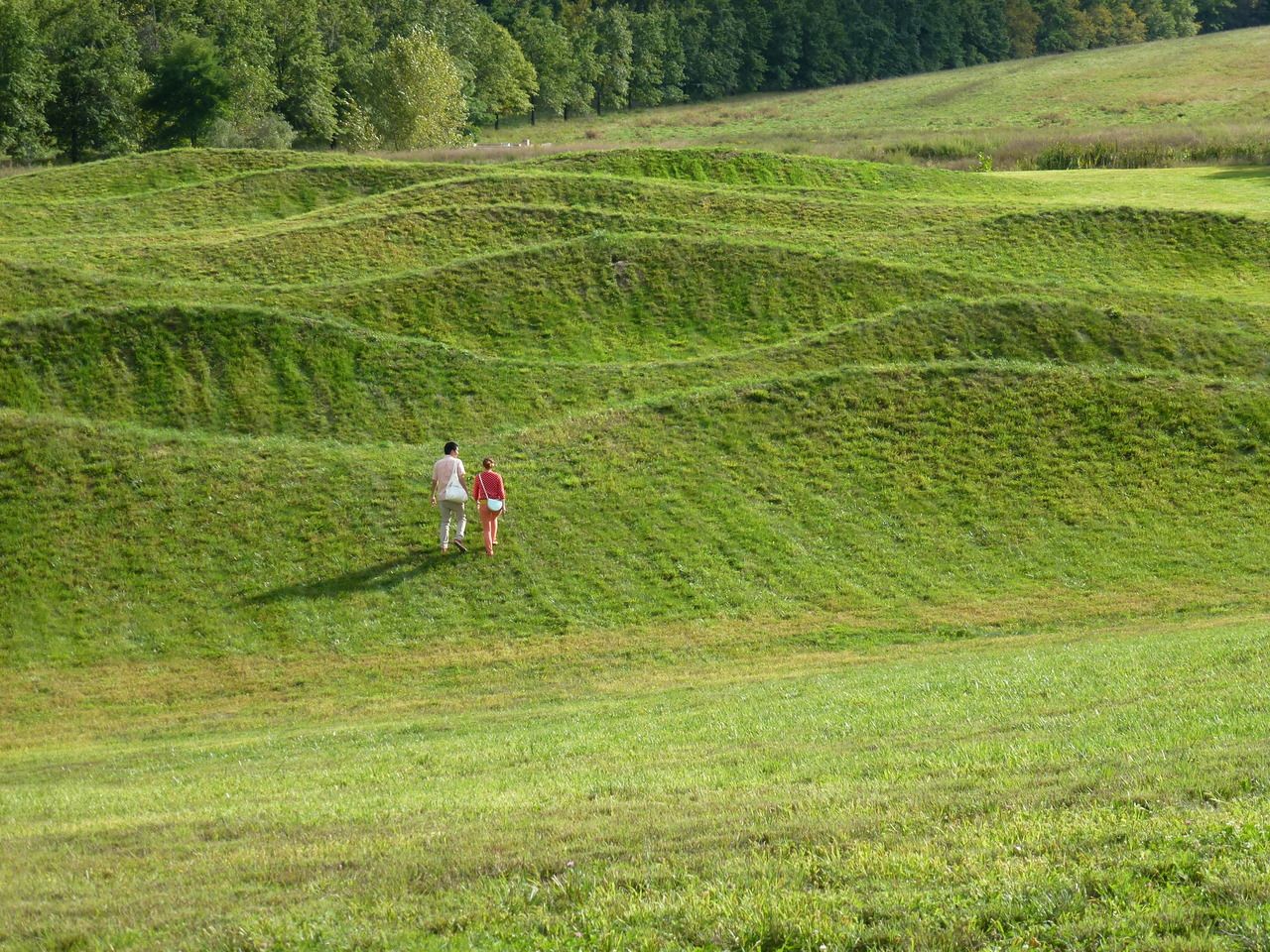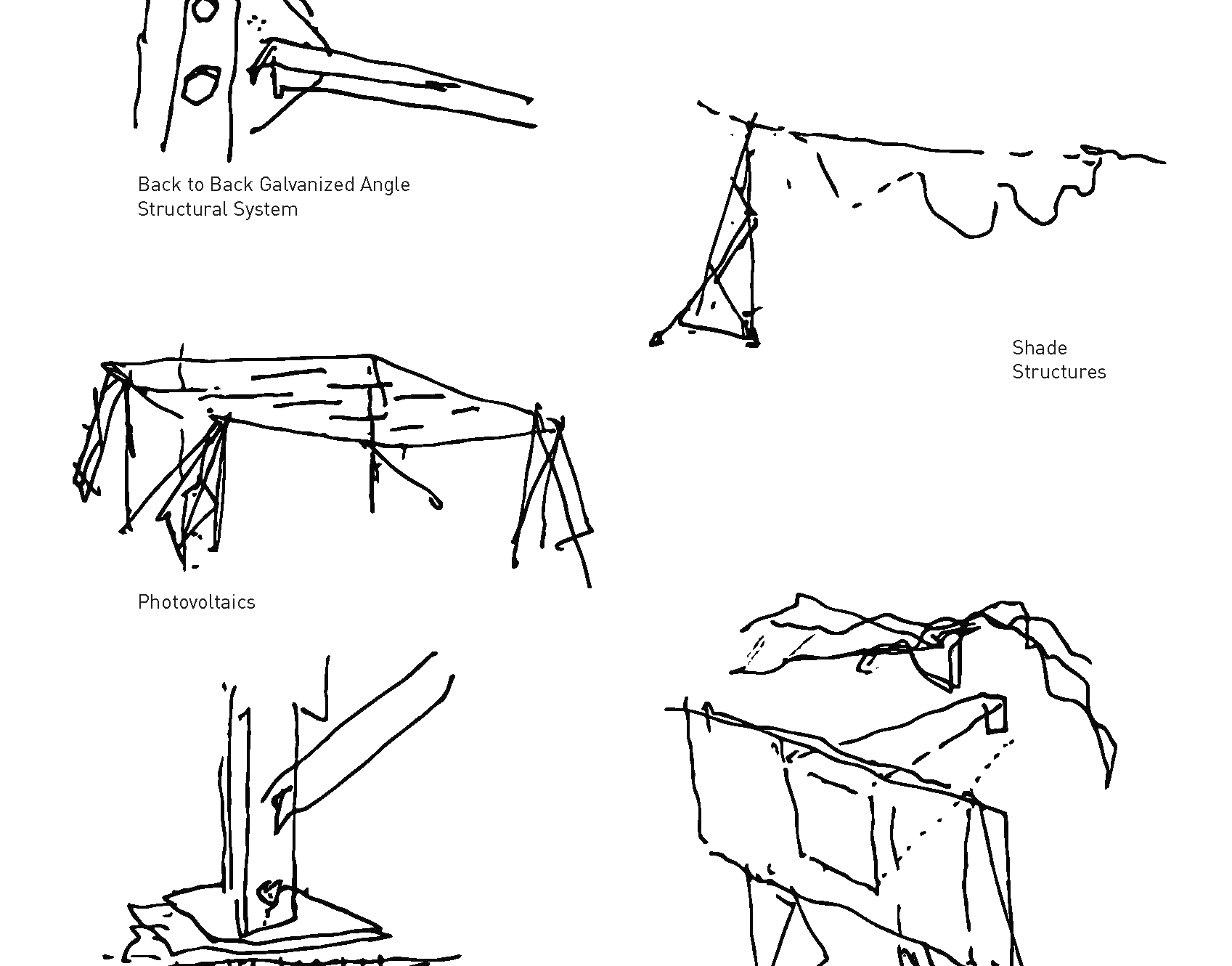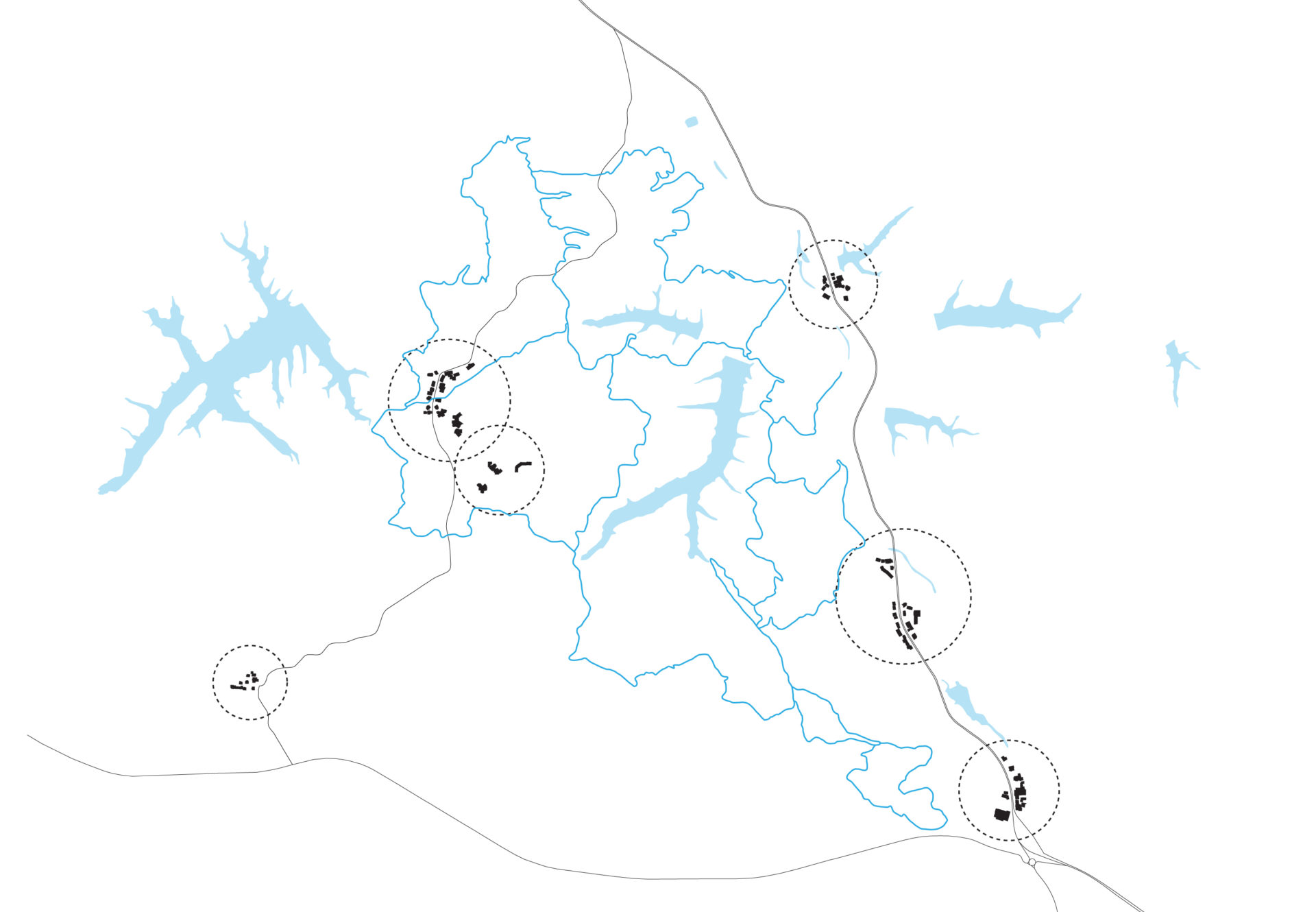Little Sugar Trails, Bella Vista, AR
Leave No Trace
In the spring of 2020 kdA teamed up with OJB Landscape Architecture to develop an initial concept for a series of design “Memorable Moment” interventions to Little Sugar, a 50-mile mountain bike trail system at the base of the Ozark Mountains in Bella Vista, Arkansas.
In the spirit of the outdoor and mountain biking principle of “Leave No Trace,” our team viewed this project as an opportunity to create moments of focus based on seasonal, site specific and removable physical interventions, and our early ideas explored the aesthetic dimensions and possibilities of this fundamental paradox: how do you integrate something that is heavily constructed and inherently artificial into a landscape without damaging, or permanently altering, its natural fabric?
Although the project ultimately did not move forward, this core challenge of responsibly introducing architecture and design into natural environments remains a highly relevant consideration.
The following concepts and strategies, influenced by simple construction, landscape artists and the Ozarks’ natural terrain and ecosystem informed our initial concept:
The Art of Nature
This part of the state, with its heavy tree canopy, and natural mineral resources such as crystals, diamonds, coal and limestone, interspersed with mountains, caves, lakes, rivers and waterfalls, creates frames and backdrops along the trail that can immerse visitors, while also promoting education and conservation of these valuable natural lands.
We proposed to develop a glossary of potential collaborators, working in a wide range of media, to express and explore the cultural and environmental conditions that are presented along the trail. Site-specific collaboration with artists might include the sculptural use of light, wayfinding or sound installations, as seen in artists such as James Turrell or Janet Echelman. OJB Landscape Architecture has worked with many artists to dissolve the boundaries between landscape experiences and art, including LeBauer Park with the fiber artist Janet Echelman and the acclaimed light and space artist James Turrell at Rice University.
Dissolving the boundary between nature and visitor, whether in framed overlooks or in intimate moments of rest, is essential to the quality and character of this area. The goal is not only to preserve and protect its heritage, but also to educate and inspire visitors to do the same.
Exposing Phenomena
Topography is the essential experience of the rolling landscape in the Ozarks, the media against which our movement through the trail system would be measured. We are inspired by some of the examples shown here: a spiral in the landscape that appears only in low water conditions, rolling dunes formed by a long-ago road building project, an excavation aligned with another across a valley, or a light scrim stretched across a forest to give measure to the trees. The lightning field reminds us that a single datum, a horizontal plane stretched across the desert gives dimension and scale to the horizon, and a momentary lack of fog can bring objects into greater focus.
Michael Heizer: Double Negative, Overton, Nevada
Intensify the Flyway
Working with local naturalists, we considered planting distinctive groves of trees that would be identifiable from a distance and compatible with the fauna associated with the Mississippi flyway. Creating landscape milestones that contrast with the prevailing forest fabric would provide intermediate markers for bikes and birds, indexing travel time to location and destination.
Tool Kit
We proposed to employ construction systems of easy adaptation for use as the infrastructure of the project: the back-to-back angles of typical power distribution towers came to mind as a system that is readily adapted to site conditions, loading and size. To minimize carbon footprint, we proposed replacing concrete foundations with auger footings, making entire installations fully removable and recognizing that when building in a natural setting, even permanent construction should be considered temporary.
Gravity Games
Bikes are the most efficient means devised of creating gravitational pull to the earth, and a key component of our site strategy was aimed at emphasizing the relationship between gravity and the Sugar Trails’ varying contours. A series of mirror ponds (similar to OJB’s work at Rice University) and other horizontally precise constructions designed to capture 1-2’’ of water spread throughout the site highlight this connection, drawing parallels to the inherent ephemeral and seasonal qualities of the Ozarks while creating an intricate hierarchy of (always removable, always relocatable) “Memorable Moment” destinations.
Creating New Valences
We see the trail system as an overlapping series of transformations to the topography: dam construction, road systems, golf courses, commercial and residential development and the Little Sugar Trails create a palimpsest of an overlapping new landscape that share characteristics and yet remain separate. Valences are areas of common interest and shared use, identifying programs that could draw multiple modes of engagement into a shared amenity. We proposed to push interventions beyond the purely utilitarian: can a trail head also act as a neighborhood destination by creating a field of seasonal color? Could we flatten nearby section of ground to create a mirror pond after a rain? ‘
We considered small construction efforts to engage the immediate surrounding communities, identifying areas of focus to create new connections between groups, neighborhoods and users: residential to trail and trail to commercial, all typically within a 20-minute walk.
Thinking on a larger scale, our team viewed this as an opportunity to create a regional destination, drawing mountain bikers, hikers, and other nature enthusiasts into Arkansas to experience the breadth of what Belle Vista, the Ozarks, and Little Sugar Trails have to offer.






